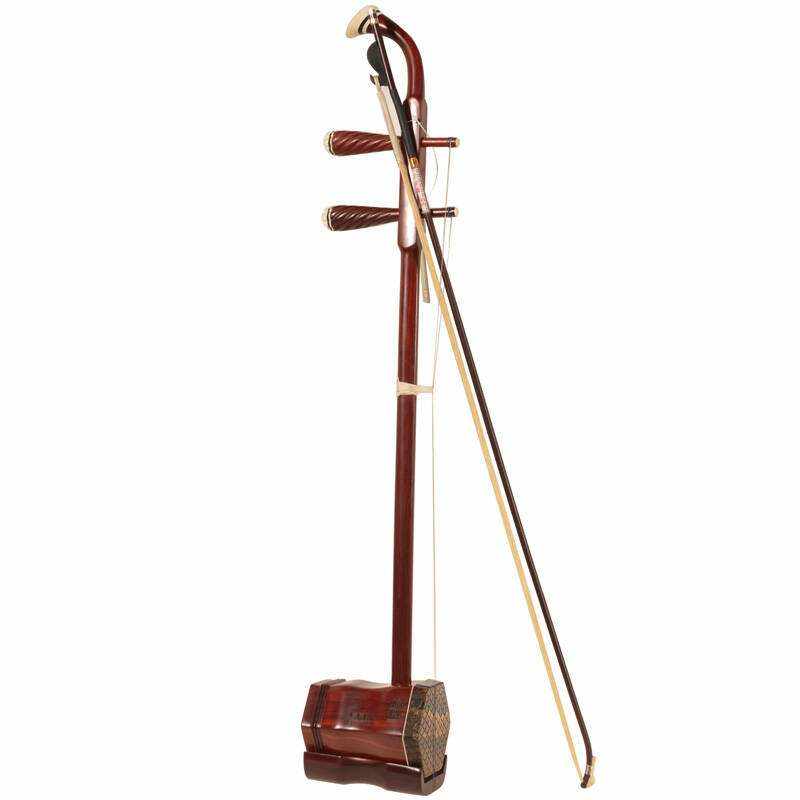Experience on the sound and volume of erhu
The timbre and volume of the erhu have a lot to do with the quality and texture of the erhu itself. I think an obsessed erhu lover should have at least two erhus, one for practice and one for playing. The grade depends on the actual situation of each individual. I have 4 huqin, one is the Dunhuang brand mahogany erhu, one is the higher-grade southern red sandalwood hexagonal erhu, one is the ebony octagonal erhu produced in the north, and one is the banhu. From the perspective of playing the piano, the volume of the octagon is higher than that of the concertina, and the volume of the small piano is a little bigger than that of the large one.
The volume and timbre of an erhu are basically set after the erhu is formed. To be changed artificially, it is only from the aspects of the jin, the qin size, the number of bow hairs, the speed of the bow, the texture of the strings, and the tension. Consider, in addition, the depth of the bottom bracket, the string groove of the bridge, and the circle are also closely related.
—— Are the height, depth, and effective string length of the bundles up to the requirements and the distance between the piano rod and the piano barrel? How about the material of the kilogram?
——Prepare a few more piano bridges, and it is best to have as many as possible of various materials and models.
——Whether the bow has been used for too long, whether the number of bow hairs meets the requirements, and whether the level, speed and personal bowing habit of the bow are in harmony with the piano?
——Is the texture and tension of the strings a consideration?
——What is the size, texture, thickness, up-and-down movement, and tightness of the sound pad?
——Is the combination of the bottom bracket and the piano barrel neat and true?
- Are the depth, width and straightness of the string grooves good?
——Is there any gap at the junction of the piano bar and the piano barrel?
All of the above, I think, have a great impact on the sound and volume of the erhu. After any erhu is used, it must go through repeated personal debugging and running-in in order to gradually achieve satisfaction.

Furthermore, the timbre and volume of the erhu are relative, as long as this erhu is really good, it is not a matter of craftsmanship and material, the timbre and volume are not abnormal, it should be said that this erhu is still good, this is the personality of the erhu , should be left to remain natural. If the luthier himself likes to play warm and soft tunes, it is better to use the erhu produced in the south. After all, the function of an erhu is limited, and each of us who loves the piano does not need to be too full of blame, but must satisfy himself with his beloved violin everywhere.
Also, if you want to use metal materials for the erhu, Master Zhao Hanyang has already discussed that putting a piece of bicycle tire air skin on the string hook of the erhu has a very good effect. I used wax from the building materials market. Silk light, in fact, the effect is good; the bridge can be made of different materials according to the style of the selected tune, and the string groove can be wide or narrow. The tune should be pure and upright, and the string grooves can be wider; for the choice of sound pads, I think leather is the best (sheepskin, suede and other soft animal skins); , and it does affect the tone and volume, you can consider asking an experienced master to adjust it, if not, go to the original manufacturer for a replacement. You can also use a worn-out guqin as an experiment, sum up the methods for improving the sound and volume of the erhu in terms of string spacing and string length, and even keep the worn-out erhu from being discarded.
 渝公网安备 50010702504639号
渝公网安备 50010702504639号